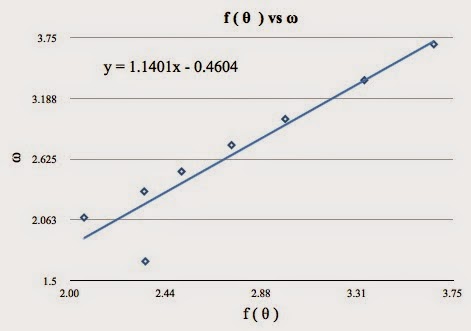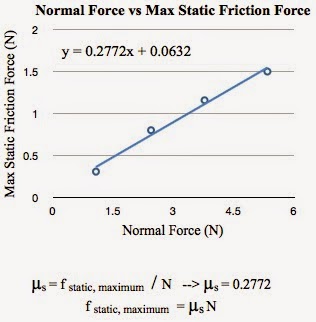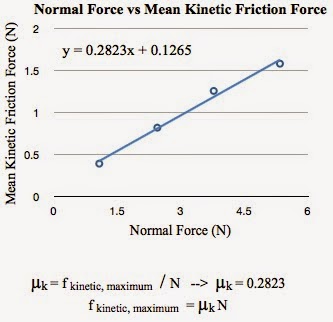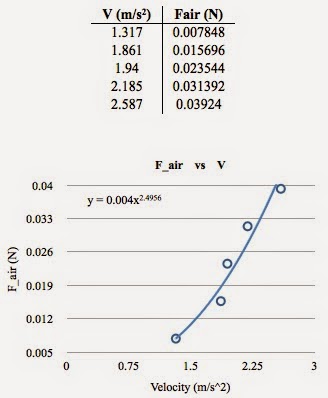Purpose
In this lab we had to apply what we learned about circular motion to find the relationship between angular speed (ω) and the angle (θ) of the string for a rotating apparatus.
Procedure + Equipment
What we used:
- tripod
- rotating motor
- string
- meter stick
- tall ring stand + clamp
What we did:
- Measured the total height of the system, the length of the string, and the distance from the center of the system to the end where the string is tied.
- The professor then set the apparatus to rotate at 8 different speeds where we had to time for 10 rotations. We took times and h2 for each speed.
- The h2 was measured by setting up a ring stand with a paper, so that when the mass on the end of the string brushed against the paper, we could measure how the height of the paper to the ground
 |
| This is how we calculated h2, by adjusting the height of the paper until the mass at the end of the string brushed against the paper. Then that height was measured. |
 |
| On the left is the data we collected from the lab set up. On the right is
the data was collected when timing for 10 rotations and the h2 for each
trial. |
 |
| This is how we calculated for f(θ) for each trial |
 |
This is how we calculated for the angular speed (ω) for each trial
|
 |
| This is what each θ , f(θ), and ω come out to be for each trial |
 |
| This is the slope we get when we graph f(θ) vs ω. Our slope is 1.1401. |
The relationship we predicted we would get was 1, but we got 1.1401, which is 14.01% error.
Summary
In this lab we found the relationship between the angular speed (ω) and the angle (θ) of the string for the rotating apparatus. We theorized that once we graphed it, the slope would be 1, but we found ours was 1.1401. That is a 14.01% error, and the reason for our percent error comes from the measurements we took for our data. We had some difficult times measuring the height and the distance of the set up. The time might also be off, which adds up.
















































